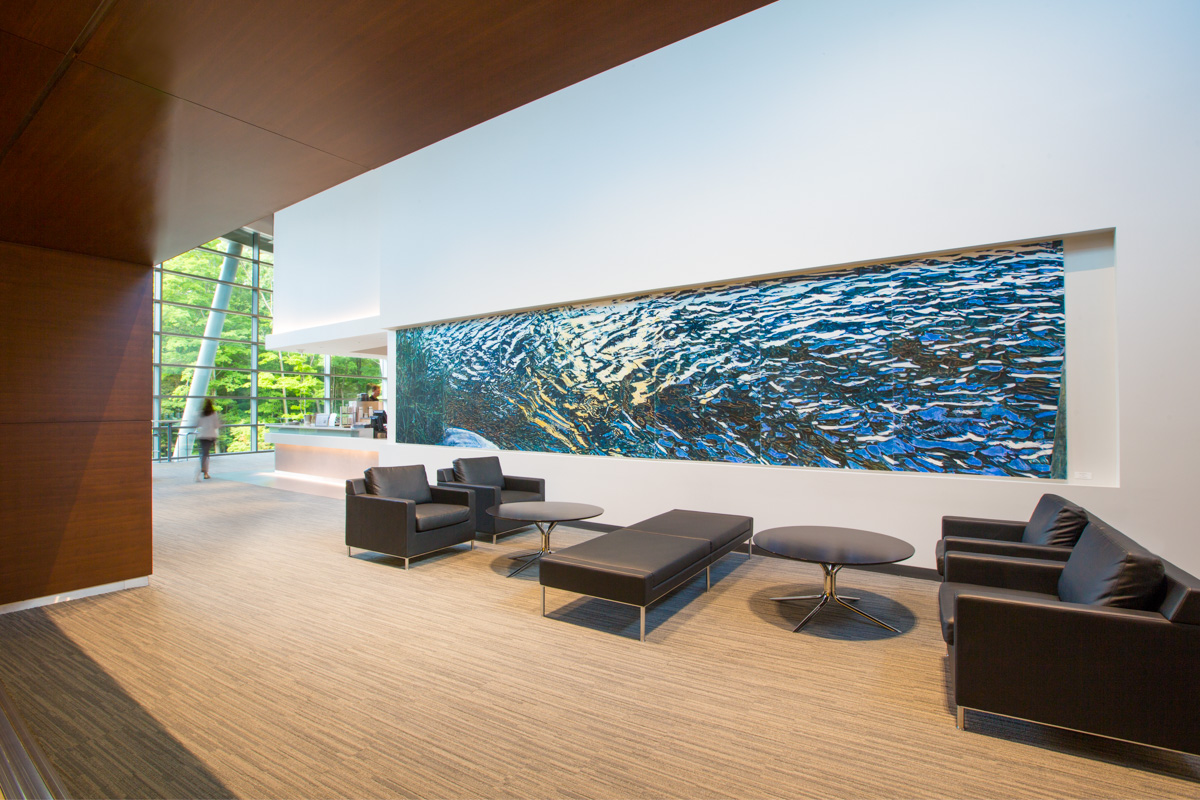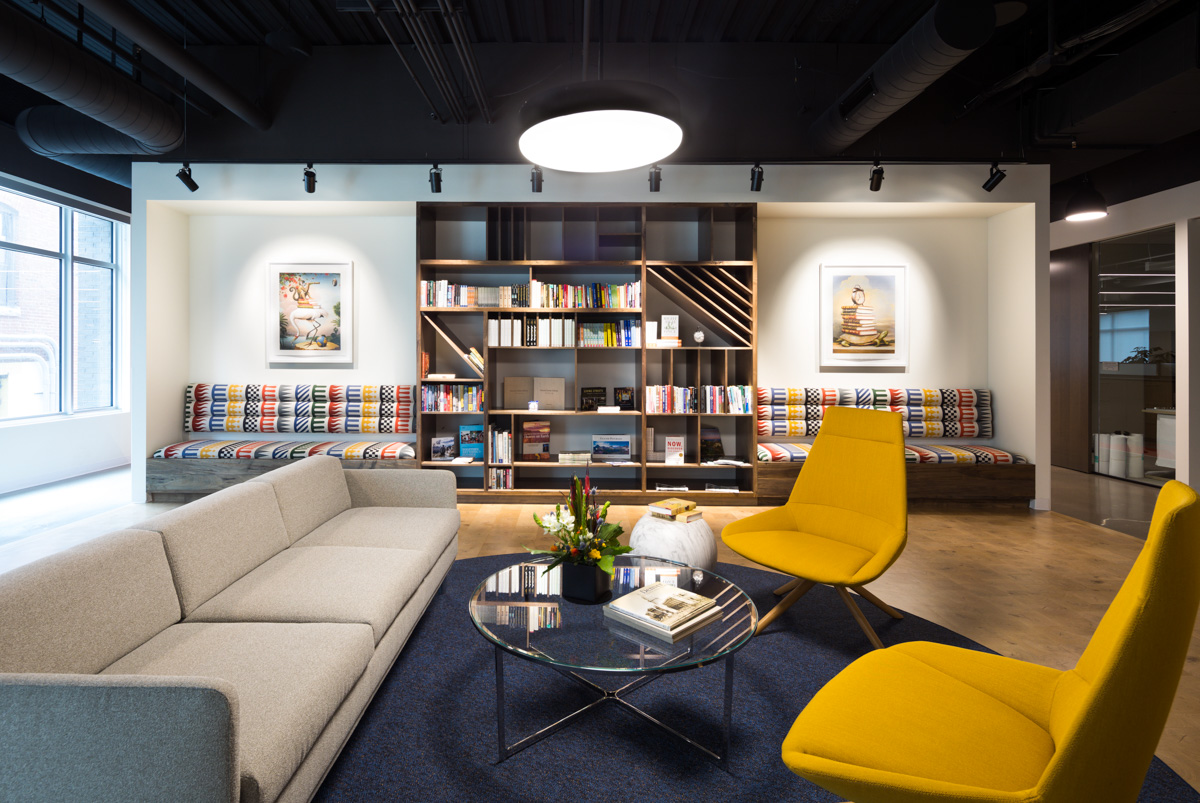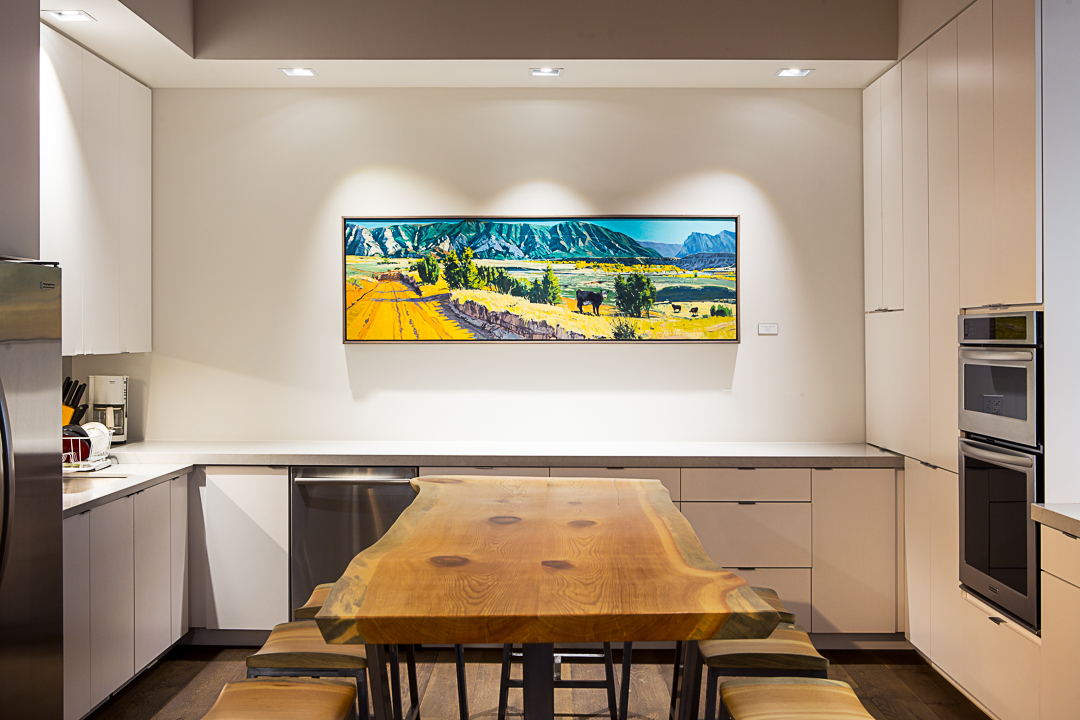4 Reasons Art Is Critical in Post-Pandemic Office Environments

We are officially one year into the “work from home” era. More than ever, as various companies are choosing to segue back into office life, workforces are asking what an in-person office will look like in a post-pandemic age. While challenging, we believe these questions offer businesses a massive opportunity to restructure their workforce on purpose, on a mission, and on common passion–factors an office space should reflect.
In the words of actor Dennis Weaver, “We don’t have to sacrifice a strong economy for a healthy environment.” Never has this been truer than in our current world, as we continue to deal with the implications and future impacts of COVID-19. It is imperative the workforces mingle purposeful design with beneficial functionality.
Future-forward companies must reimagine workspaces for the sake of their physical offices and their growth plans. As a result, it is necessary they focus on three principles to ensure their organizations are welcomed into a new era:
- Change
- Compassion
- Environment
As we progress into the future, here is how businesses can transition back into the office while seizing the opportunity to create a space that makes these three initiatives possible.
Everything rests on teamwork.
The workforce of the future will never know a monotonous in-person, 9 am-5 pm Monday through Friday jobs in the same respect that generations before them have revered the phenomenon. And that is for a great reason. In fact, many organizations have reported an increase in employee productivity due to a remote working environment. So, how does the corporate world enter this new professional age while keeping a traditional workplace setting?
Create social spaces that feed collaborators, stimulating innovation and developing a physical environment that displays brand values—a feat unachievable in a remote environment. According to a recent study conducted by McKinsey and Company, supported the notion that businesses must design workspaces that support interactions. Corporate executives and workplace designers who choose to implement these upgrades create a forward-thinking workspace that fosters connection, while serving as a catalyst for team building, which magnifies productivity and innovation.

Here’s 4 key tips to to put a collaborative work environment design plan into action:
- Create a social lounge or “living room” space dedicated to employee bonding, brainstorming, and relaxing
- Employ both indoor and outdoor spaces for events, happy hours, and workshops
- Section larger spaces into smaller “vignettes” where two to four people can connect
- Capitalize on the aesthetic of a space to bring ideas to life, such as implementing art, plants, and furniture to help foster partnerships and well-being
NINE dot ARTS recently conducted a study that found that 92% of people say art installations elicit positive work-satisfaction. In conjunction with this statistic, a recent Exeter University study, notes that work productivity increases by 17% when art is incorporated into a workspace.
Workplace success blossoms in an environment created for talent development and mentorship.
A perk of remote workplaces is the enlargement of the talent pool available for hire for historically in-person positions. However, while discussing the tension between in-person workspaces and collaboration, there is also much to be said for the role of a workplace in talent development. In fact, some of the world’s most innovative companies dedicate resources to constructing workplaces designed for connection, to serve as a reminder to team members that they are a part of a larger picture—a sometimes forgotten message when working from a laptop at your apartment’s kitchen table.
So, where do organizations wishing to fill this need begin? Start with regular collaborative training efforts for team members. Incorporate in-person office visits into department schedules. Encourage remote workers to visit the office space to understand the company values and mission. Celebrate common goals in a communal way. And use strategic art and design to effectively communicate the values of the organization.
Incorporating dynamic art into a workplace creates visual pillars of company, culture, values, stability, and long-term success. For example, The Gates Family Foundation recently renovated their offices, incorporating 25 pieces of art spanning more than 20,000 square feet with the intent to not only display the history of the Colorado area, but to be a persistent reminder of the heartbeat of the organization to staff and bypassers.

Don’t just talk about your company culture; craft it visually.
Your office is where your brand birthplace and art is a creative way to strategically tell your story via a social space. Over 60% of individuals surveyed by NINE dot ARTS said art chosen for their spaces must express the business’s brand, mission, and vision. And why not? It’s the most specific, most disarming vehicle to tell your story.
Art is the visual representation of your brand and company culture. Take advantage of the emerging trend of multidisciplinary art: the diverse methods of storytelling through an assortment of disruptive artistic installations like murals, sculptures, or film projections. Art doesn’t have to just be a still painting on a wall in a fancy conference room. It can disrupt any hallway, any bathroom, any lobby; it can draw people in; and it can, without a doubt, foster conversation.
Why Reevaluating workspaces is non-negotiable
As businesses worldwide shift to encourage workforces back to the office, inward reflection and a deep understanding of organizational goals is the first step in redesigning a workspace backed by change, compassion and environment. Those who rise to the challenge will do so by placing collaboration and connection at the forefront of the movement, and in turn, creating memorable work experiences.
Make the office a premium, not a prerequisite.